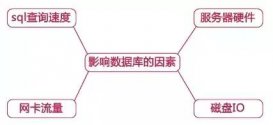例如:
id name value
1 a pp
2 a pp
3 b iii
4 b pp
5 b pp
6 c pp
7 c pp
8 c iii
id是主鍵
要求得到這樣的結果
id name value
1 a pp
3 b iii
4 b pp
6 c pp
8 c iii
方法1
delete YourTable
where [id] not in (
select max([id]) from YourTable
group by (name + value))
方法2
delete a
from 表 a left join(
select (id) from 表 group by name,value
)b on a.id=b.id
where b.id is null
查詢及刪除重復記錄的SQL語句
查詢及刪除重復記錄的SQL語句
1、查找表中多余的重復記錄,重復記錄是根據單個字段(peopleId)來判斷
select * from people
where peopleId in (select peopleId from people group by peopleId having count(peopleId) > 1)
2、刪除表中多余的重復記錄,重復記錄是根據單個字段(peopleId)來判斷,只留有rowid最小的記錄
delete from people
where peopleId in (select peopleId from people group by peopleId having count(peopleId) > 1)
and rowid not in (select min(rowid) from people group by peopleId having count(peopleId )>1)
3、查找表中多余的重復記錄(多個字段)
select * from vitae a
where (a.peopleId,a.seq) in (select peopleId,seq from vitae group by peopleId,seq having count(*) > 1)
4、刪除表中多余的重復記錄(多個字段),只留有rowid最小的記錄
delete from vitae a
where (a.peopleId,a.seq) in (select peopleId,seq from vitae group by peopleId,seq having count(*) > 1)
and rowid not in (select min(rowid) from vitae group by peopleId,seq having count(*)>1)
5、查找表中多余的重復記錄(多個字段),不包含rowid最小的記錄
select * from vitae a
where (a.peopleId,a.seq) in (select peopleId,seq from vitae group by peopleId,seq having count(*) > 1)
and rowid not in (select min(rowid) from vitae group by peopleId,seq having count(*)>1)
(二)
比方說
在A表中存在一個字段“name”,
而且不同記錄之間的“name”值有可能會相同,
現在就是需要查詢出在該表中的各記錄之間,“name”值存在重復的項;
Select Name,Count(*) From A Group By Name Having Count(*) > 1
如果還查性別也相同大則如下:
Select Name,sex,Count(*) From A Group By Name,sex Having Count(*) > 1
(三)
方法一
declare @max integer,@id integer
declare cur_rows cursor local for select 主字段,count(*) from 表名 group by 主字段 having count(*) >; 1
open cur_rows
fetch cur_rows into @id,@max
while @@fetch_status=0
begin
select @max = @max -1
set rowcount @max
delete from 表名 where 主字段 = @id
fetch cur_rows into @id,@max
end
close cur_rows
set rowcount 0 方法二
"重復記錄"有兩個意義上的重復記錄,一是完全重復的記錄,也即所有字段均重復的記錄,二是部分關鍵字段重復的記錄,比如Name字段重復,而其他字段不一定重復或都重復可以忽略。
1、對于第一種重復,比較容易解決,使用
select distinct * from tableName
就可以得到無重復記錄的結果集。
如果該表需要刪除重復的記錄(重復記錄保留1條),可以按以下方法刪除
select distinct * into #Tmp from tableName
drop table tableName
select * into tableName from #Tmp
drop table #Tmp
發生這種重復的原因是表設計不周產生的,增加唯一索引列即可解決。
2、這類重復問題通常要求保留重復記錄中的第一條記錄,操作方法如下
假設有重復的字段為Name,Address,要求得到這兩個字段唯一的結果集
select identity(int,1,1) as autoID, * into #Tmp from tableName
select min(autoID) as autoID into #Tmp2 from #Tmp group by Name,autoID
select * from #Tmp where autoID in(select autoID from #tmp2)
最后一個select即得到了Name,Address不重復的結果集(但多了一個autoID字段,實際寫時可以寫在select子句中省去此列)
(四)
查詢重復
select * from tablename where id in (
select id from tablename
group by id
having count(id) > 1
)
學習sql有一段時間了,發現在我建了一個用來測試的表(沒有建索引)中出現了許多的重復記錄。后來總結了一些刪除重復記錄的方法,在Oracle中,可以通過唯一rowid實現刪除重復記錄;還可以建臨時表來實現...這個只提到其中的幾種簡單實用的方法,希望可以和大家分享(以表employee為例)。
SQL> desc employee
Name Null? Type
----------------------------------------- -------- ------------------
emp_id NUMBER(10)
emp_name VARCHAR2(20)
salary NUMBER(10,2)
可以通過下面的語句查詢重復的記錄:
SQL> select * from employee;
EMP_ID EMP_NAME SALARY
---------- ---------------------------------------- ----------
1 sunshine 10000
1 sunshine 10000
2 semon 20000
2 semon 20000
3 xyz 30000
2 semon 20000
SQL> select distinct * from employee;
EMP_ID EMP_NAME SALARY
---------- ---------------------------------------- ----------
1 sunshine 10000
2 semon 20000
3 xyz 30000
SQL> select * from employee group by emp_id,emp_name,salary having count (*)>1
EMP_ID EMP_NAME SALARY
---------- ---------------------------------------- ----------
1 sunshine 10000
2 semon 20000
SQL> select * from employee e1
where rowid in (select max(rowid) from employe e2
where e1.emp_id=e2.emp_id and
e1.emp_name=e2.emp_name and e1.salary=e2.salary);
EMP_ID EMP_NAME SALARY
---------- ---------------------------------------- ----------
1 sunshine 10000
3 xyz 30000
2 semon 20000
2. 刪除的幾種方法:
(1)通過建立臨時表來實現
SQL>create table temp_emp as (select distinct * from employee)
SQL> truncate table employee; (清空employee表的數據)
SQL> insert into employee select * from temp_emp; (再將臨時表里的內容插回來)
( 2)通過唯一rowid實現刪除重復記錄.在Oracle中,每一條記錄都有一個rowid,rowid在整個數據庫中是唯一的,rowid確定了每條記錄是在Oracle中的哪一個數據文件、塊、行上。在重復的記錄中,可能所有列的內容都相同,但rowid不會相同,所以只要確定出重復記錄中那些具有最大或最小rowid的就可以了,其余全部刪除。
SQL>delete from employee e2 where rowid not in (
select max(e1.rowid) from employee e1 where
e1.emp_id=e2.emp_id and e1.emp_name=e2.emp_name and e1.salary=e2.salary);--這里用min(rowid)也可以。
SQL>delete from employee e2 where rowid <(
select max(e1.rowid) from employee e1 where
e1.emp_id=e2.emp_id and e1.emp_name=e2.emp_name and
e1.salary=e2.salary);
(3)也是通過rowid,但效率更高。
SQL>delete from employee where rowid not in (
select max(t1.rowid) from employee t1 group by
t1.emp_id,t1.emp_name,t1.salary);--這里用min(rowid)也可以。
EMP_ID EMP_NAME SALARY
---------- ---------------------------------------- ----------
1 sunshine 10000
3 xyz 30000
2 semon 20000
SQL> desc employee
Name Null? Type
----------------------------------------- -------- ------------------
emp_id NUMBER(10)
emp_name VARCHAR2(20)
salary NUMBER(10,2)
可以通過下面的語句查詢重復的記錄:
SQL> select * from employee;
EMP_ID EMP_NAME SALARY
---------- ---------------------------------------- ----------
1 sunshine 10000
1 sunshine 10000
2 semon 20000
2 semon 20000
3 xyz 30000
2 semon 20000
SQL> select distinct * from employee;
EMP_ID EMP_NAME SALARY
---------- ---------------------------------------- ----------
1 sunshine 10000
2 semon 20000
3 xyz 30000
SQL> select * from employee group by emp_id,emp_name,salary having count (*)>1
EMP_ID EMP_NAME SALARY
---------- ---------------------------------------- ----------
1 sunshine 10000
2 semon 20000
SQL> select * from employee e1
where rowid in (select max(rowid) from employe e2
where e1.emp_id=e2.emp_id and
e1.emp_name=e2.emp_name and e1.salary=e2.salary);
EMP_ID EMP_NAME SALARY
---------- ---------------------------------------- ----------
1 sunshine 10000
3 xyz 30000
2 semon 20000
2. 刪除的幾種方法:
(1)通過建立臨時表來實現
SQL>create table temp_emp as (select distinct * from employee)
SQL> truncate table employee; (清空employee表的數據)
SQL> insert into employee select * from temp_emp; (再將臨時表里的內容插回來)
( 2)通過唯一rowid實現刪除重復記錄.在Oracle中,每一條記錄都有一個rowid,rowid在整個數據庫中是唯一的,rowid確定了每條記錄是在Oracle中的哪一個數據文件、塊、行上。在重復的記錄中,可能所有列的內容都相同,但rowid不會相同,所以只要確定出重復記錄中那些具有最大或最小rowid的就可以了,其余全部刪除。
SQL>delete from employee e2 where rowid not in (
select max(e1.rowid) from employee e1 where
e1.emp_id=e2.emp_id and e1.emp_name=e2.emp_name and e1.salary=e2.salary);--這里用min(rowid)也可以。
SQL>delete from employee e2 where rowid <(
select max(e1.rowid) from employee e1 where
e1.emp_id=e2.emp_id and e1.emp_name=e2.emp_name and
e1.salary=e2.salary);
(3)也是通過rowid,但效率更高。
SQL>delete from employee where rowid not in (
select max(t1.rowid) from employee t1 group by
t1.emp_id,t1.emp_name,t1.salary);--這里用min(rowid)也可以。
EMP_ID EMP_NAME SALARY
---------- ---------------------------------------- ----------
1 sunshine 10000
3 xyz 30000
2 semon 20000
mysql刪除重復記錄語句的方法
2019-11-08 15:15mysql教程網 Mysql
查詢及刪除重復記錄的SQL語句,雖然有點亂,但內容還是不錯的。
延伸 · 閱讀
- 2022-03-11MySQL的索引你了解嗎
- 2022-03-10面試中老生常談的MySQL問答集錦夯實基礎
- 2022-03-10淺談如何保證Mysql主從一致
- 2022-03-10Ubuntu18.04(linux)安裝MySQL的方法步驟
- 2022-03-09MySQL讓人又愛又恨的多表查詢
- 2022-03-09MySQL Server 層和存儲引擎層是怎么交互數據的?
- Mysql

MySQL全文索引、聯合索引、like查詢、json查詢速度哪個快
這篇文章主要介紹了MySQL全文索引、聯合索引、like查詢、json查詢速度大比拼,通過實例代碼截圖的形式給大家介紹的非常詳細,具有一定的參考借鑒價值...
- Mysql

MySQL 查詢速度慢與性能差的原因與解決方法
隨著網站數據量與訪問量的增加,MySQL 查詢速度慢與性能差的問題就日漸明顯,這里為大家分享一下解決方法,需要的朋友可以參考下...
- Mysql

MySQL鎖的知識點總結
在本篇文章里小編給大家整理了關于MySQL鎖的知識點總結以及實例內容,需要的朋友們學習下。...
- Mysql

MySQL之Field‘***’doesn’t have a default value錯誤解決辦法
這篇文章主要介紹了MySQL之Field‘***’doesn’t have a default value錯誤解決辦法,需要的朋友可以參考下 ...
- Mysql

MySQL server has gone away錯誤提示解決方法
今天遇到類似的情景,MySQL只是冷冷的說:MySQL server has gone away。 ...
- Mysql

Centos7下使用yum安裝mysql數據庫的詳細教程(增強版)
這篇文章主要介紹了Centos7下使用yum安裝mysql數據庫的詳細教程(增強版),非常不錯,具有參考借鑒價值,需要的朋友可以參考下 ...
- Mysql

解決重置Mysql root用戶賬號密碼問題
這篇文章主要介紹了解決重置Mysql root用戶賬號密碼問題,本文給大家介紹的非常詳細,具有一定的參考借鑒價值,需要的朋友可以參考下...
- Mysql

幾種MySQL中的聯接查詢操作方法總結
這篇文章主要介紹了幾種MySQL中的聯接查詢操作方法總結,文中包括一些代碼舉例講解,需要的朋友可以參考下 ...










